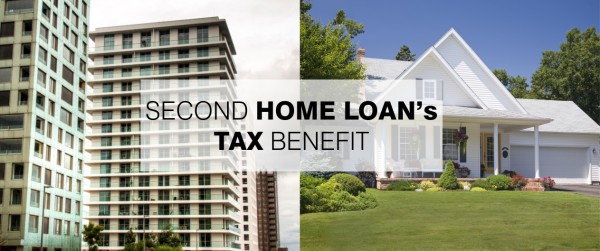A second home loan can reduce taxable income.
In the previous article, we examined the effect of two sections i.e. Section 80 C and Section 24 of the Income Tax Act. Section 80 C refers to the repayment of principal and qualifies for a deduction of up to Rs 1.5 Lacs for the financial year 2015-2016 and Section 24 which pertains to the interest payment on the self-occupied property with an upper limit of Rs 2 Lacs.
What if someone already has an existing home and takes a home loan for another property?
Here for income tax purposes one home will be considered as self-occupied property and the other is considered to be let out irrespective of whether it is let out or not.
The taxpayer is expected to pay a tax based on minimum Annual Let Out Value of the property.
Tax Implications
Principal payment under Section 80 C
As far as principal is concerned, for all the properties put together one can claim total deduction up to 1.5 Lacs (Note that the Deduction are always on the Gross Total Income)
For Interest component Section 24
Full interest on home loan is allowed as deduction for the let out property – so there is no limit of Rs 2 Lacs like in a self-occupied property
An Example
A person has two residential properties and is servicing home loan for both.
Interest on property- A is for the year is Rs 80000 and Rs 125000 for the second property.
Annual let out value for Property A – is 134,000 and for property – B is Rs 167,000
Here is how income from property will be calculated after reducing Interest paid under Section 24
[table id=7 /]The Income tax act allows the assesse to mention one of the properties as Self Occupied. The choice is entirely up to the assesse that which one he shows as Self occupied so as to reduce his tax liability. (This is provided both the properties and the assesse are in the same city)
Examining a scenario where the person has a net taxable income from Salary of Rs 15,00,000/- and these two homes in the same city, with the above mentioned rentals and also the interest paid remains the same as above and a total of Rs 1.5 Lacs is paid as principal for both home put together.
Which of these properties should be taken up self-occupied ?
– If property A is self – occupied, then annual let out value from property A will be Zero
[table id=8 /]If Property B is Self-occupied, then annual let out value from Property B will be Zero
[table id=11 /]In the above case it is beneficial for the person to have Property B as Self Occupied property.
An individual can set off loss from House property against other incomes.
For example in this case if the person has a Income from salary as 10 lacs and Net taxable income after 80C and loss from House Property can come down to 7.39 lacs barring income from speculation or carried forward for subsequent years and be set off against Income from House Property.
So, to maximize savings, one should consider the house with the highest loan as the non-exempt one. However, make sure that the interest payment on this loan is higher than the principal-cum-interest payment on the other loan.




